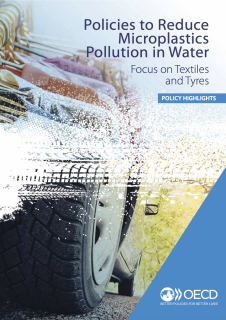
Microplastics are ubiquitous in the natural environment. In an effort to address the issue and improve and protect water quality, this report synthesizes the current state of knowledge on the sources, fate and risks of microplastics pollution. It then focuses on two sources of microplastics pollution, textile products and vehicle tires, due to their substantial contribution to global microplastics emissions and currently largely absent policy frameworks to mitigate them.
Several best practices and technological solutions can be implemented along the lifecycle of textile products and tires to mitigate releases to the environment. The report proposes policy insights on measures and strategies that could help minimize microplastics emitted unintentionally from products and their potential impacts on human health and ecosystems.
It also recommends the implementation of effective mitigation measures through interdisciplinary policy tools. Attaining resource productivity, managing plastics and preventing leakage are key elements for the climate policy objectives of OECD countries. The research calls for strategized approaches to microplastics pollution, aiming to strengthen coastal landscapes and their biodiversity.
